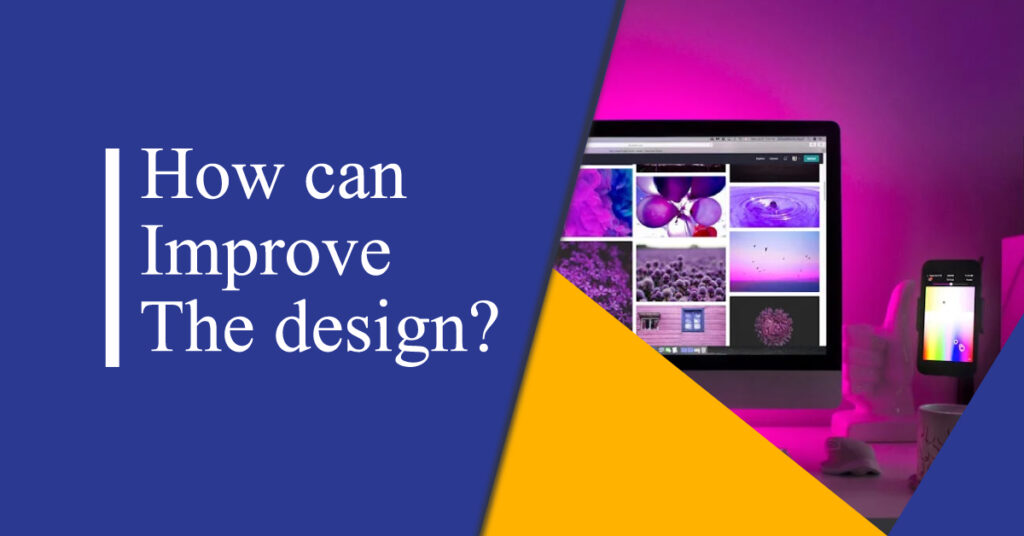Design Thinking is a user-centered approach, used for creative problem solving. It is a structured process that helps in creating new ideas and user needs and wants. Design thinking is essentially an attitude that develops through innovation, experimentation, and feedback. Here we will discuss in detail how design thinking helps to improve the creative process.
Fundamental Concepts of Design Thinking
The core concept of design thinking is to think in innovative and solve problems. It involves first understanding the problem properly, then working on new ideas. It is used not only to solve problems, it also to create services, and experiences.
Design thinking is often conducted in five steps:
1. Empathize: Understand the problem from the user’s point of view.
2. Define: The problem is specifically identified.
3. Ideate: New solutions and ideas are created.
4. Prototype: The concept is tested by building the initial model.
5. Test: Feedback is collected from users using prototypes and the solution is further improved.
Each of these five steps plays an important role in fostering creativity. Each step deals with a different perspective on solving a problem and creates opportunities to learn something new.
How design thinking improves the creative process
There are many ways to improve the creative process design thinking. It is not just a structural approach, but a mindset that works for creative solutions.
1. Understanding User Perspective
The first step in design thinking and through this you can find innovative solutions for any problem. Analyzing the problem from the user’s perspective is important to the thinking process, as it allows one to get deeper into the problem. It unleashes creative thinking and find a new path. Through this feedback, designers understand which parts need further improvement. When a designer or inventor is fully connected to the user’s problem, his thinking becomes more creative, as he begins to think from a new perspective to solve the problem.
2. Defining the Problem Accurately
Correct problem definition is very important for creative solutions. The second step in design thinking is to define the problem and clearly the problem is defined to solve it. if a designer wants to improve the usability of a product, he must first understand which parts users are having trouble with. Identifying the problem specifically leads to new creative solutions.
3. Generating Creative Ideas
The most important step in design thinking is idea generation. This phase is the process of working on new solutions, where creative thinking is emphasized. The more new ideas about a problem can be elicited through a brainstorming session, the more new perspectives can be found for solutions. The key here to boost creativity is to generate as many ideas as possible first without evaluating all ideas. This method generates variety and new ideas, which enhances creative thinking.
4. Rapid Prototyping and Testing
Design thinking is prototyping and rapid testing. The process of creating a preliminary model, where ideas are tested to see how they will work in real life.
A creative idea can be turned into reality by quickly testing and receiving feedback. Through prototyping, designers can realistically implement their creative ideas and quickly test them to see what works. This allows for more creative problem solving. Here we will discuss in detail how design thinking helps to improve the creative process.
5. Learning from Feedback
The most important parts of the creative process is taking feedback. The testing phase of design thinking uses prototypes to get feedback from users. Through this feedback, designers understand which parts need further improvement. The process of revising ideas and creating new solutions based on feedback makes designers think more creatively.

Practical Applications of Design Thinking
Design thinking is used not only in design or innovation. but also in various industries, businesses, education, and healthcare. Its practical application can be done in following ways:
Product Development: When developing new products or services using design thinking makes it easier to find solutions according to user needs.
Business Strategy: When developing a business strategy or marketing plan, design thinking can be used to find solutions from new perspectives.
Educational system: Using design thinking in education can enhance students’ creative thinking.
Improving healthcare: Design thinking can improve the quality of healthcare, such as developing new treatments based on patient.
One of the biggest benefits of design thinking is that it gives structure to creative thinking. This allows designers and innovators to quickly come up with creative methods and solve problems. It solves problems using a process of constant testing, revision, and feedback, which expands creativity.
Important :
Through this feedback, designers understand which parts need further improvement. When a designer or inventor is fully connected to the user’s problem, his thinking becomes more creative, as he begins to think from a new perspective to solve the problem. The first understanding the problem properly, then working on new ideas. It also to create services, and experiences and involves first understanding the problem properly working on creative ideas. It is used not only to solve problems, it also to create services. so we can get feedback is collected from users using prototypes and the solution is further improved. process.
Design thinking is a powerful method that organizes creative thinking and provides a framework for generating new ideas and solutions. Through this you can find innovative solutions for any problem. Design thinking is used not only in design or innovation. but also in various industries, businesses, education, and healthcare. Design thinking is one of the most effective ways to improve the creative process, working at every step from problem solving to innovation. more
